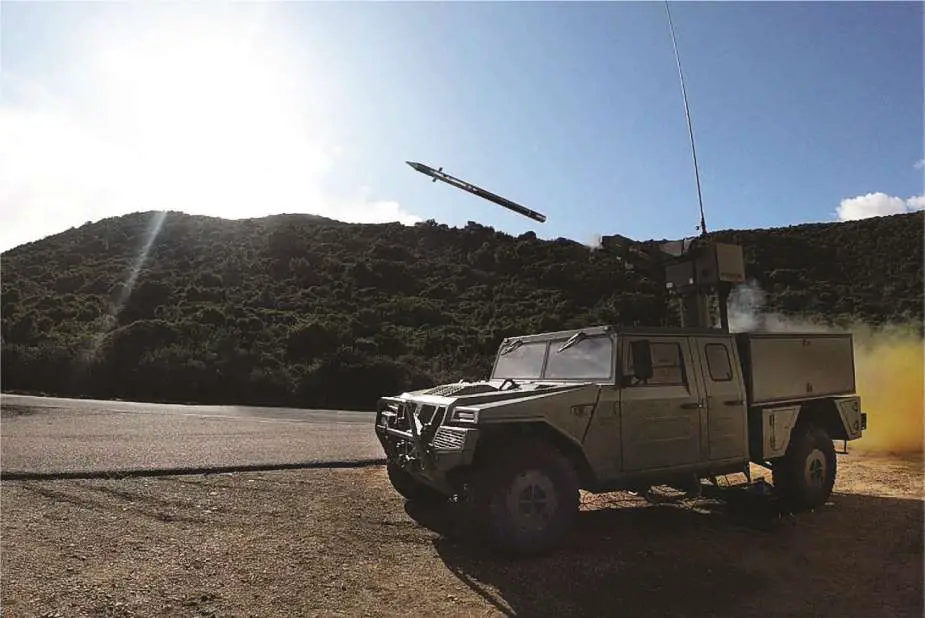Breaking news
MBDA Spain to begin deliveries of new Mistral 3 missiles in 2026.
MBDA Spain has announced that deliveries of the new Mistral 3 anti-aircraft missiles for the Armed Forces will begin in 2026. María Durán, General Director of MBDA Spain, confirmed a ten-year contract for the supply of missiles and modernization of launch posts, with deliveries starting in the third year.
Follow Army Recognition on Google News at this link

The Mistral 3 missile, designed by MBDA, is a very short-range air-to-ground missile (VSHORAD) (Picture source: MBDA)
The Ministry of Defense and MBDA Spain concluded this deal, valued at 325 million euros, in December 2023. The company will provide over 500 missiles and collaborate with the Spanish industry to update the launch posts.
The General Director detailed the modernization, which will enhance the capabilities of the Mistral 3 beyond previous versions. MBDA Spain has selected Spanish company Tecnobit to supply a new camera for the launch post currently in service in the Army, Air and Space Force, and the Navy (Marine Infantry).
Durán emphasized that the Mistral 3 program marks the beginning of a development plan in Spain, aiming to strengthen MBDA's position as a leading company in the missile sector.
She recalled that the Spanish division of the European missile consortium has long worked with a group of national suppliers (sub-system manufacturers). Notable companies include Sener, Indra, Aernnova, Escribano, Fábrica de municiones de Granada, and Tecnobit. These companies contribute not only to national projects but also to international ones. As an example, Durán mentioned the Meteor program, a missile used by the Air and Space Force, in which Spain participates by 10%.
The Mistral 3 missile, designed by MBDA, represents a very short-range air-to-ground missile (VSHORAD) technology advancement. This weapon system is distinguished by its "fire-and-forget" capability, meaning once launched, the missile automatically pursues its target without needing further guidance.
A feature of the Mistral 3 is its use of an infrared (IR) matrix imager, the first in its category, making it immune to all known IR countermeasures. This gives it an enhanced capability for target detection and tracking, thus increasing its single-shot kill probability (SSKP) to over 96% in operation.
The missile is entirely passive regardless of the launcher, meaning it does not rely on active guidance systems that could be detected or disrupted. Its high maneuverability, capable of handling up to 30g, allows it to track extremely agile targets that can perform maneuvers up to 9g.
The Mistral 3 can reach targets up to 8,000 meters away and 6,000 meters in altitude, with a high supersonic speed of 930 m/s, ensuring a short interception time. The minimum interception range is 500 meters.
This missile is equipped with a 3 kg warhead and uses a laser proximity and impact fuse to ensure effective target destruction. A two-stage solid propellant motor provides propulsion.
The Mistral 3 has been designed for a 20-year lifespan without needing maintenance, making it a cost-effective and reliable long-term weapon system. It is also qualified for use in extreme conditions, ranging from -40°C to +71°C, demonstrating its robustness and reliability in various operational environments.
With a length of 1.88 meters (including the launch motor), a weight of less than 20 kg, and a diameter of approximately 92 mm, the Mistral 3 presents a compact and manageable design, ideal for a variety of ground launch platforms in air defense.
Rodríguez Maroto also detailed other projects and solutions offered by MBDA Spain to the Ministry of Defense. Among these is the development of a point defense system for Navy ships. The company has already conducted a study for integrating such a system. Moreover, MBDA Spain proposes integrating the long-range Taurus cruise missile into Eurofighter jets, as the Air and Space Force plans to retire its F-18 fleet, currently the only jet capable of launching the Taurus in Spain. MBDA Spain is also offering to design an anti-drone system for the Armed Forces in collaboration with other national companies.

























